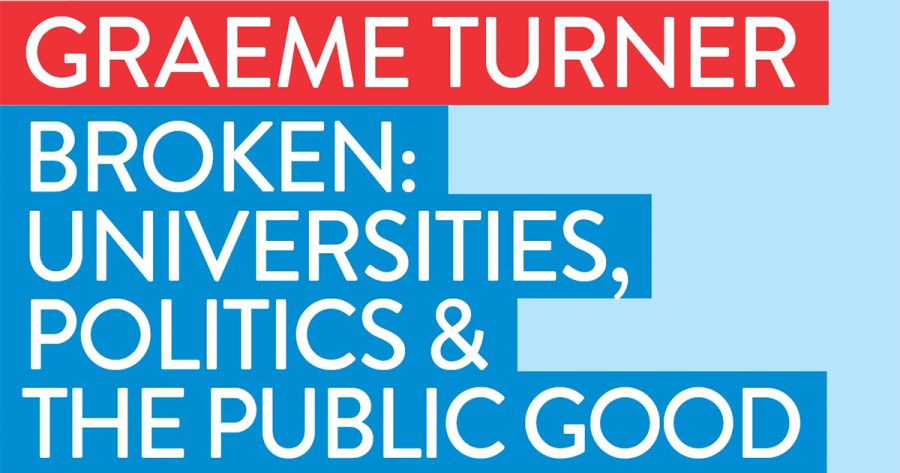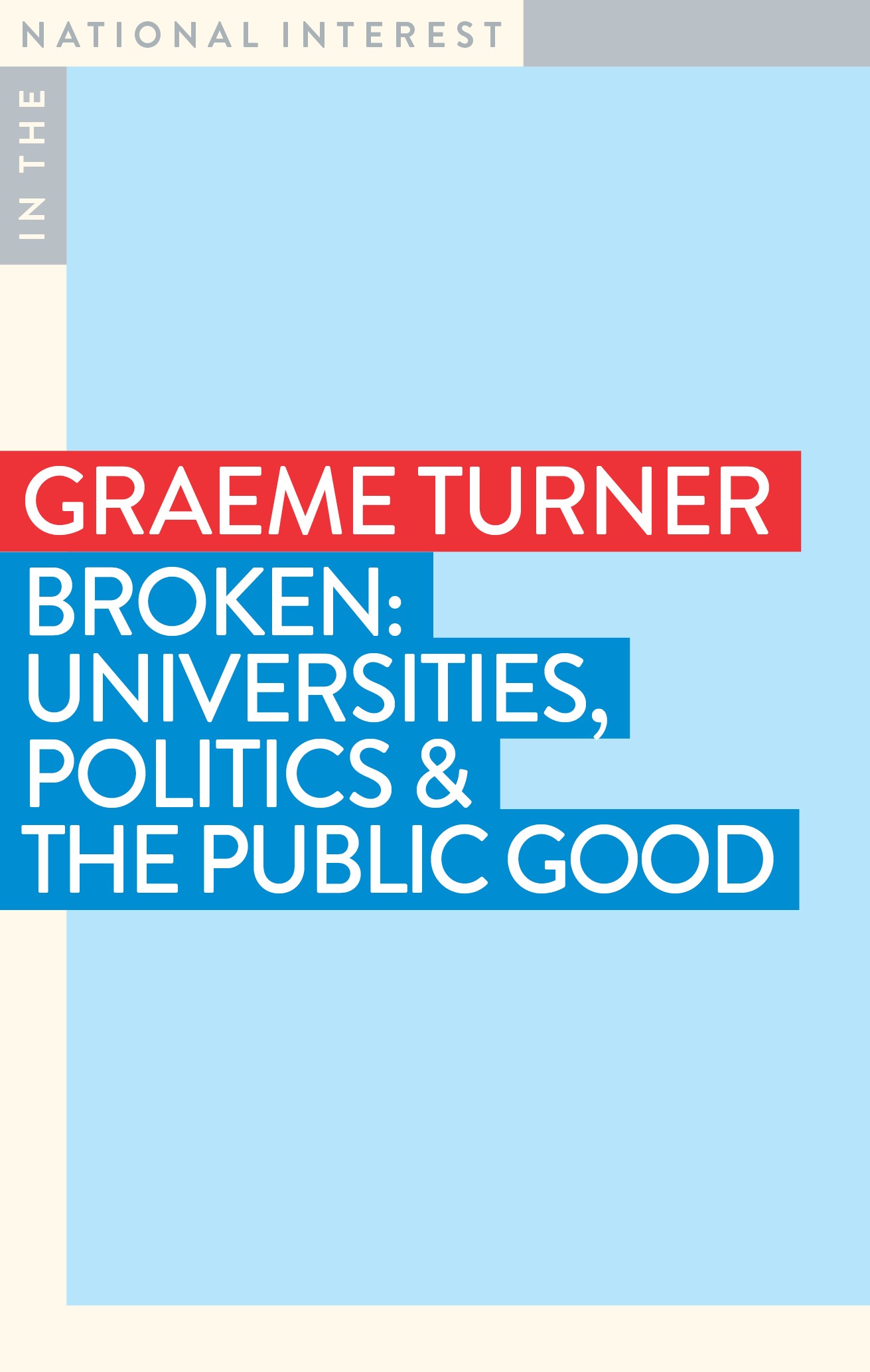
- Free Article: No
- Contents Category: Universities
- Review Article: Yes
- Article Title: Universities in crisis?
- Article Subtitle: A study in diminishing capacity
- Online Only: No
- Custom Highlight Text:
Are universities hated by government? Yes, according to a member of the Morrison government, who reportedly said as much to journalist George Megalogenis in 2021. The Morrison government’s attacks on the universities and particularly the humanities were blatantly ideological. After three years in office the extent of the correction by the current Labor Government remains unclear.
- Book 1 Title: Broken
- Book 1 Subtitle: Universities, politics and the public good
- Book 1 Biblio: Monash University Publishing, $19.95 pb, 96 pb
- Book 1 Cover Small (400 x 600):

- Book 1 Cover (800 x 1200):

- Book 1 Readings Link: https://www.readings.com.au/product/9781923192270/broken--graeme-turner--2025--9781923192270#rac:jokjjzr6ly9m
Twenty-five years ago, I was part of a senate inquiry which produced a detailed report entitled ‘Universities in Crisis’. Many of the findings in that report were uncannily similar to Turner’s observations. As we remarked then, and as Turner writes now, the development of the enterprise university has seen the deterioration of pay and working conditions for staff, increased casualisation of staff, and an over-reliance on overseas students. We have seen a decline in morale, underpayment of staff, undermined academic freedom, and the undervaluing of basic research, directly diminishing the nation’s research capacity.
The Howard government rejected the senate report on the basis that it viewed higher education as a private good. Then Education Minister Dr David Kemp asserted that funding was adequate and that the user-pays model was more appropriate to a market system.
The current Labor government, through its universities accord process, has acknowledged the fundamental problems facing our universities. The current Minister for Education, Jason Clare, has paid particular attention to equity and teaching issues. The Australian Research Council Act 2001 has been amended to avoid the excesses of ideologically motivated ministerial veto.
It is worth recalling the political response to the ‘Universities in Crisis’ report as an example of the way in which dissent and criticism can be treated by government. Professor Ian Chubb – at the time ANU Vice-Chancellor and President of the Australian Vice-Chancellors’ Committee – conceded to the senate committee that universities were indeed in crisis. Minister Kemp objected to Professor Chubb in a letter copied to all vice-chancellors, which the committee found ‘intimidatory and completely inappropriate’. Kemp alleged that Chubb’s evidence was a ‘misleading and damaging characterisation of the sector’, which had ‘the very real potential to damage the standing of Australian universities both domestically and internationally’.
Chubb’s damning, evidence-laden rebuttal to Kemp’s claims was published by the senate. How many vice-chancellors today would have the willingness or capacity to carry such a national debate? Derided for being unable to ‘speak coalition’ to the previous government, scorned for being too corporate today, vice-chancellors seem unable to defend their sector.
Graeme Turner’s commentary fills this vacuum, bridging the gap between the daily experience of academics and professional staff at the coalface and the objectives of policymakers and bureaucrats in Canberra. Turner understands the importance and value of politics in the pursuit of the public good. He highlights the impact of the 1980s John Dawkins reforms that established the Unified National System.
Broken charges the Dawkins reforms with firmly establishing the Commonwealth’s decisive role in higher education policy. But Dawkins’s revolution must also be credited with increasing participation and delivering the benefits of higher education to a much wider section of the community. In 1985, ten per cent of those under forty had secured a university degree. In 2025, that number has risen to fifty per cent.
While Dawkins’s reforms were part of the radical economic program of the Hawke government, it was not until 1996 that Commonwealth policy explicitly saw universities as entrepreneurial entities primarily commercial in orientation. Thirty years later, the system is characterised not by diversity but by uniformity. As Glyn Davis asserted in The Australian Idea of a University (2017), ‘competition can lead to uniformity rather than real difference’.
The evolution of the contemporary enterprise university has been a product of both necessity and design: the necessity to secure Commonwealth funding; the need for a new design as reduced per-student funding comes with ever-increasing government conditions.
Against this bleak state of affairs, Turner calls for a rethink on the purpose of higher education in Australia. He seeks a return to the view of higher education as a public good, and not just a tool for the training of skilled workers. Turner’s observations about the proposed Tertiary Education Commission highlight just how hard it is to address the institutional inertia that perpetuates the current enterprise university.
Education and research are not simply transactional or utilitarian. In a rapidly changing technological economy it is important to emphasise the value of educating the mind in how to think critically, evaluate evidence, and creatively solve problems. This is what the humanities are so well suited to do.
These have been the fundamental virtues of higher education for hundreds of years. Turner shows how we have recently let these slide, but he also argues for a way back. Whether or not you agree with every point in this stirring call to arms, no one today could argue that we are currently getting it right.


Comments powered by CComment